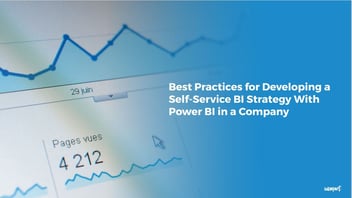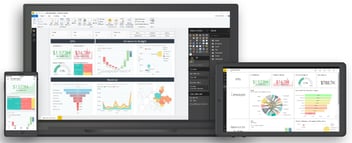How are cross-selling and up-selling applied by businesses? We present the 5 most famous cases of cross-selling and up-selling!
Recently, in this blog, we introduced two commercial techniques that are becoming a favorite among businesses when trying to increase their profitability: cross-selling and up-selling. Now we go a step further and show how they are applied in real businesses, looking at some of the most well-known companies in the world.

How are they implemented?
As we already described in 'Cross-Selling and Up-Selling: How Can They Boost Your Income?', these two commercial strategies manage to increase the average value of the purchase ticket and, consequently, raise business profits. Their strength, apart from being incredibly effective, is that they are relatively easy to implement and they produce better results than other more complex and costly techniques or strategies.
Although they are similar, they have different functionalities. Cross-selling consists of increasing the number of products purchased by each customer, while up-selling gets users to buy more expensive products. In other words, cross-selling gets customers to buy more, while up-selling gets customers to buy the same number of items, but higher-priced than those they intended to buy.
When applying any of these two techniques, it is essential to be aware that the essence of cross-selling and up-selling is not to offer as many products as possible. Doing so is never effective and, in fact, could be counterproductive, since we would probably end up saturating our clients and force them to decide not to establish further contact with our brand.
In order to carry out any commercial strategy it is crucial to consider that, whatever our goal or the technique we want to develop is, taking care of the customer experience must always be our priority. Obstructing the customer journey by promoting our services, offering discounts or oversaturating the customer is totally unproductive.
Cross-selling and up-selling are based on offering the right product to the right customer; products that meet their needs and provide them with value and, obviously, to do so in the right measure and in such a way that their experience is enriched rather than hindered. To achieve this, both techniques must start with data analysis processes using quality data about the market, the competition, our products and, especially, our customers.
Cross-selling and up-selling are useful for both B2C and B2B and can be applied in large, small and medium-sized organizations. Moreover, these techniques tend to have a lower implementation cost than other strategies that aim to achieve the same and, therefore, a higher ROI. They can also be implemented at the same time, or you can just choose one of the two. The best thing would be to consult with experts in business intelligence and data analysis to help you determine which of the two would be more fruitful for your business and how we should carry it out according to the particularities and objectives of your company.
How Do Companies Do It?
Both strategies can be developed in multiple ways and the approach depends on the type of business and the point of sale.
In e-commerce, for example, it is common for companies to recommend similar items and invite you to buy complements or purchase more products through offers. In this case, due to the fact that in the digital ecosystem there is much more information available about customers, companies tend to automate this type of process. Surely, if you are used to shopping online, it will not be difficult for you to visualize the last time you browsed through an online store. Do you remember in what ways they offered you similar items or convinced you to buy a more expensive product than the one you intended to? If so, that's cross-selling and up-selling.
In physical stores, on the other hand, gathering the necessary information to carry out these strategies is somewhat more complicated and putting them into practice is not automatic. However, physical points of sale have space, time and the customer's physical interaction with the place and the staff in their favor. It is very common for companies to place the items they want to sell —high-end products in the case of up-selling, for example— in strategic locations so that they stand out above other products of lesser value. In addition, virtually every supermarket in the world, as well as other stores, place shelves with complementary products next to the cash registers so that customers take one more thing before leaving.
In both cases, either in physical stores or e-commerce, cross-selling and up-selling owe their high effectiveness to data analysis and data quality. Only through valuable business insights will we be able to carry out either of these two strategies with success.
The 5 most successful cases of cross selling and upselling
- Amazon: The company is widely known for optimally executing both cross-selling and up-selling. If you have ever shopped at Amazon, you will have noticed that every time you add an item to your bag the company recommends other products through the phrases 'You might also be interested in...' or 'Most customers buy these products together', thus managing to apply cross-selling efficiently, since the complementary items are related to the ones you already want to buy. Likewise, Amazon also applies up-selling through Amazon Premium and, in both cases, they do so in a non-invasive way and without damaging the customer experience.
- McDonalds: The USA corporation is probably the best example of cross-selling applied in physical points of sale. In this case, the company plays with offers to guarantee an increase in the quantity of products purchased by customers. If you have eaten at McDonalds before -—who hasn't? - you will most likely have heard this: 'Would you like some fries with that?'
- Any grocery store: Practically all supermarkets develop both techniques through strategic positioning of their products, offers and discounts. You will probably feel identified with the idea of going to a supermarket to buy just one thing and ending up with a filled shopping cart. It is also very common to fall for the items on the shelves next to the checkout counters. We have all been there given that, when properly applied, cross-selling and up-selling can be infallible.
- Asos: Another example of cross-selling in e-commerce. Like Amazon, this british company that sells fashion and cosmetics recommends items every time a user enters to view a product —even before anything is added to the shopping bag—. In addition, like many other digital retailers, Asos applies up-selling by offering discounts on shipment if the total amount of the purchase exceeds a certain price.
- Apple Store: Same as Amazon, Apple performs up-selling through Apple Premium, offering similar products to those that the customer is considering, but of a higher price. However, Apple's up-selling strategy is so well developed and powerful that they have managed that the brand's most loyal clients want to purchase higher-end items every time a new product is released. Apple doesn't need to make recommendations, since the customers themselves are the ones who want to own their new products as soon as they appear.
How to create a cross-selling and up-selling strategy through data analysis? Here's a succes story.
Bismart helped a company through the process of efficiently implementing a cross-selling and up-selling strategy through an intelligent, automated suggestion system.
In our experience, a company dedicated to travel retail wanted to have a list of 3 to 10 optimal products to recommend to its customers. To this end, Bismart analyzed the company's recent sales data and developed an automated suggestion system.
We carried out an exhaustive study of the existing relationships between the company's products and the customers' relationship with them, taking into account data about customers and their purchasing habits and the variables assigned to each item such as brand, family or the sub-family of the product. Through the analysis we obtained valuable insights and about the elements at stake and the links between all of them.
An advanced report was then created with a descriptive analysis of sales based on the relevant indicators and dimensions of analysis. At Bismart, as a Microsoft Power BI partner, we develop our reports and dashboards with this set of tools to ensure that our solutions have the best technical and data visualization capabilities.
Finally, a process was set up for the analysis of 3 to 10 suggested items for cross-selling and up-selling in each case.
With all this, we were able to build an automated system of suggestions for up-selling and another for cross-selling, by means of which the company could select any item from their catalogue and, systematically, they got a list of between 3 and 10 optimal items that could be recommended to the customer, whether they were complementary products to the one the customer intended to buy (cross-selling) or alternative products of higher value (up-selling).
In short, the examples mentioned in this article give us a clearer idea of how cross-selling and up-selling are applied and what are their benefits. Today technology, data science and artificial intelligence make it possible to develop intelligent and automated commercial strategies, which is a great competitive advantage for companies that choose to invest in them.
If you could use more information about our cross-selling and up-selling solutions or would like to receive advice on how to apply them, please do not hesitate to contact us - we are here to help you!



